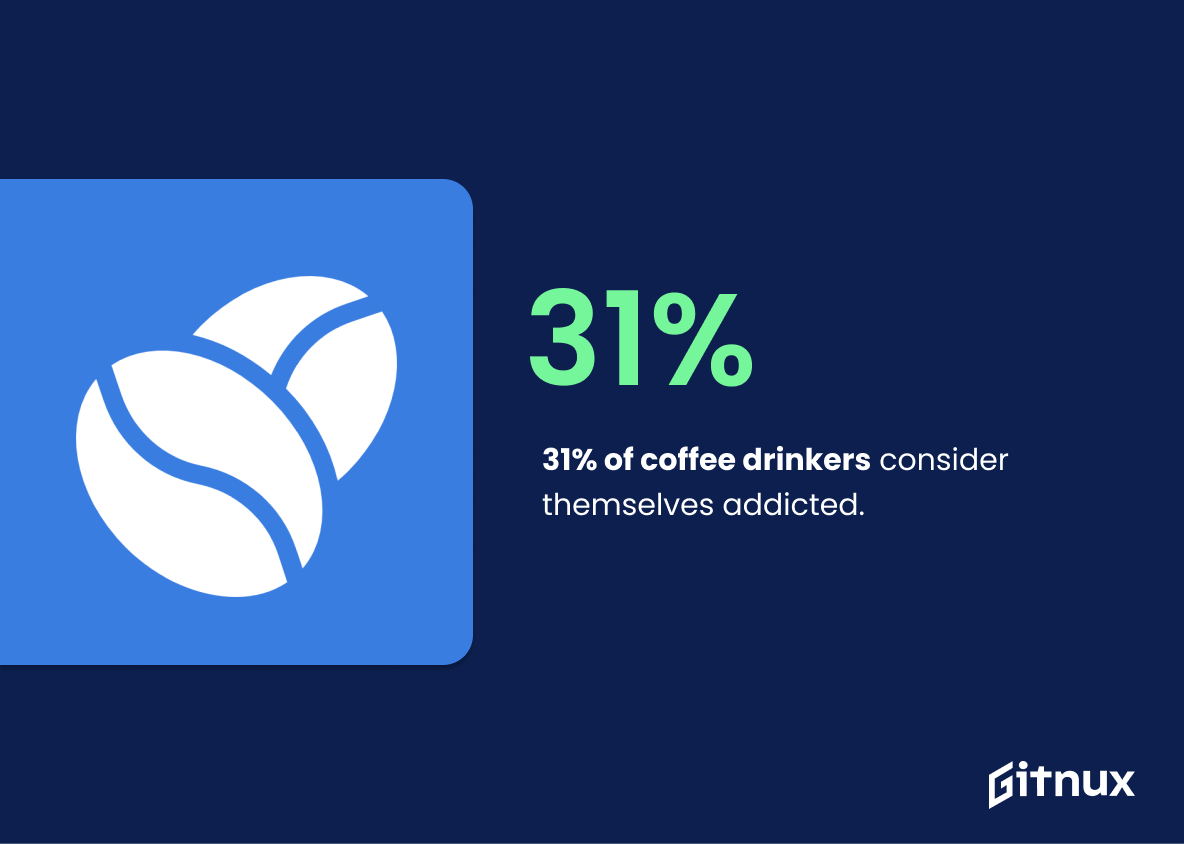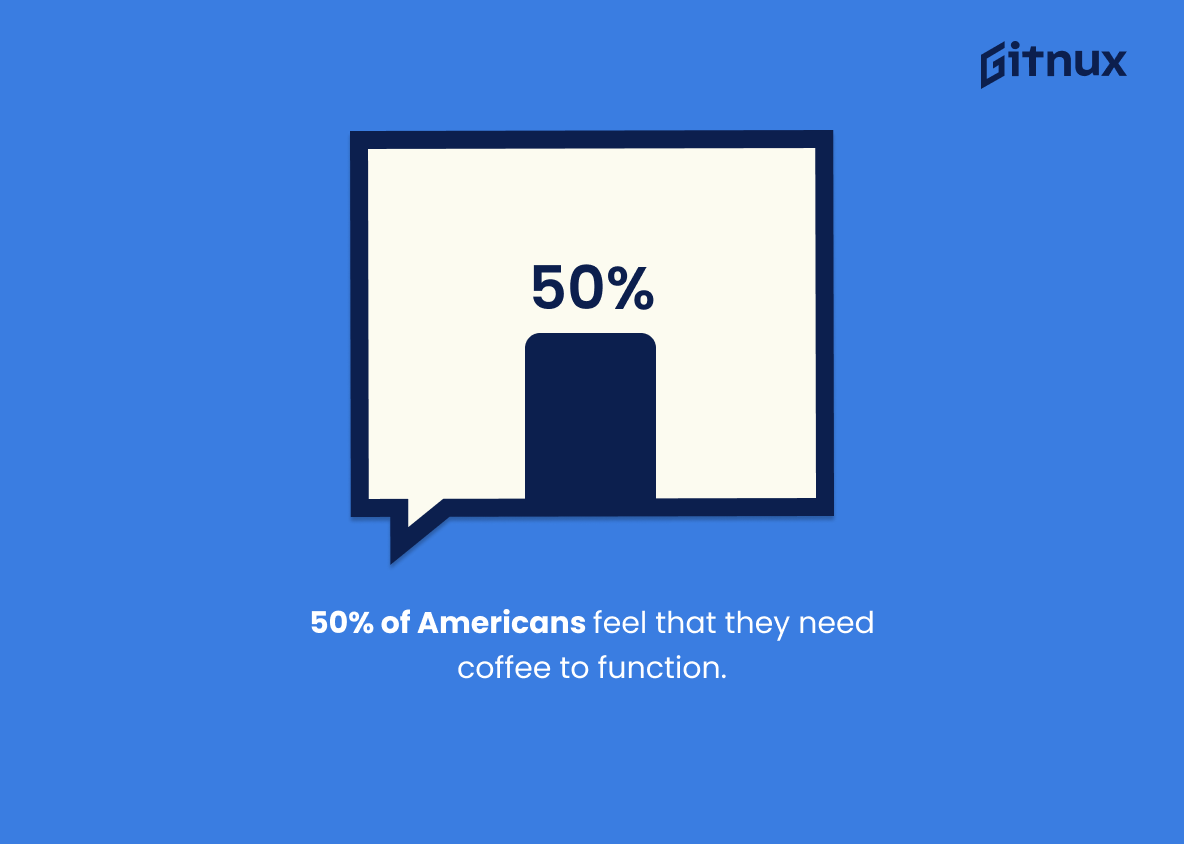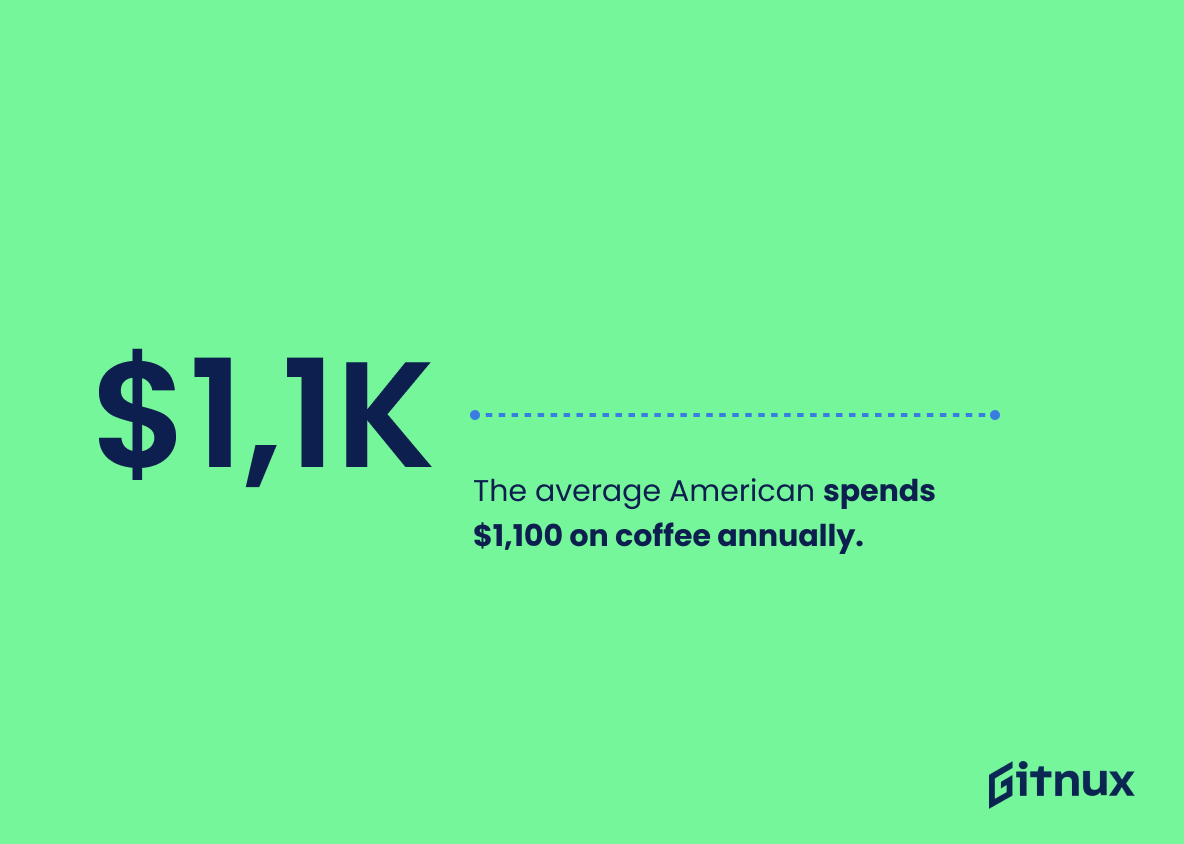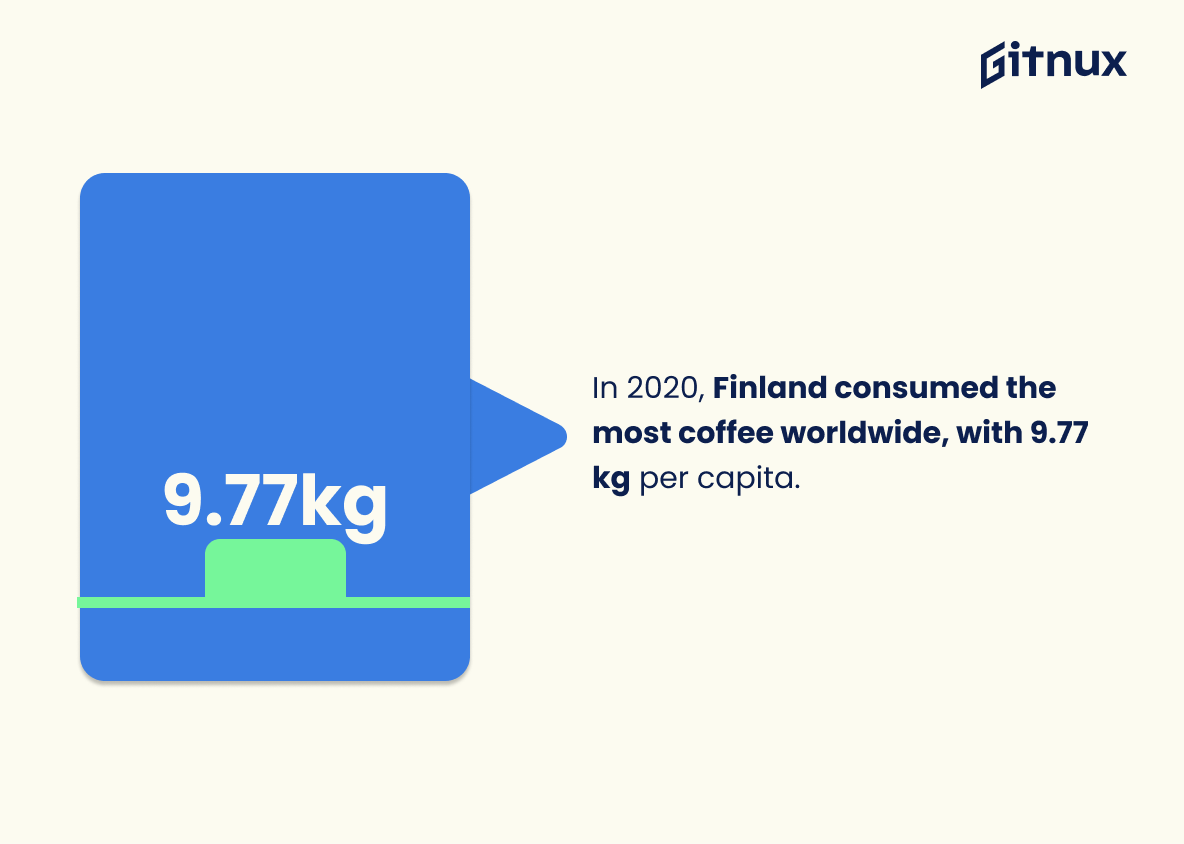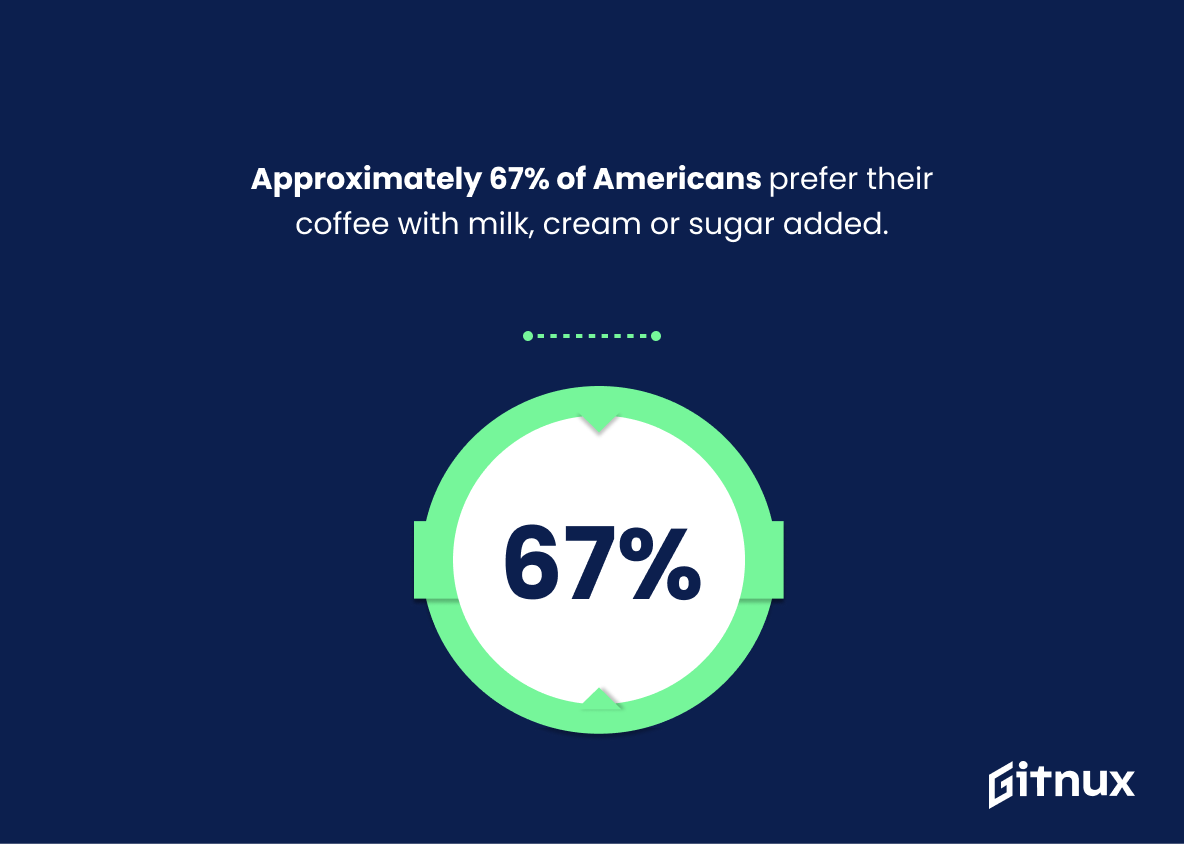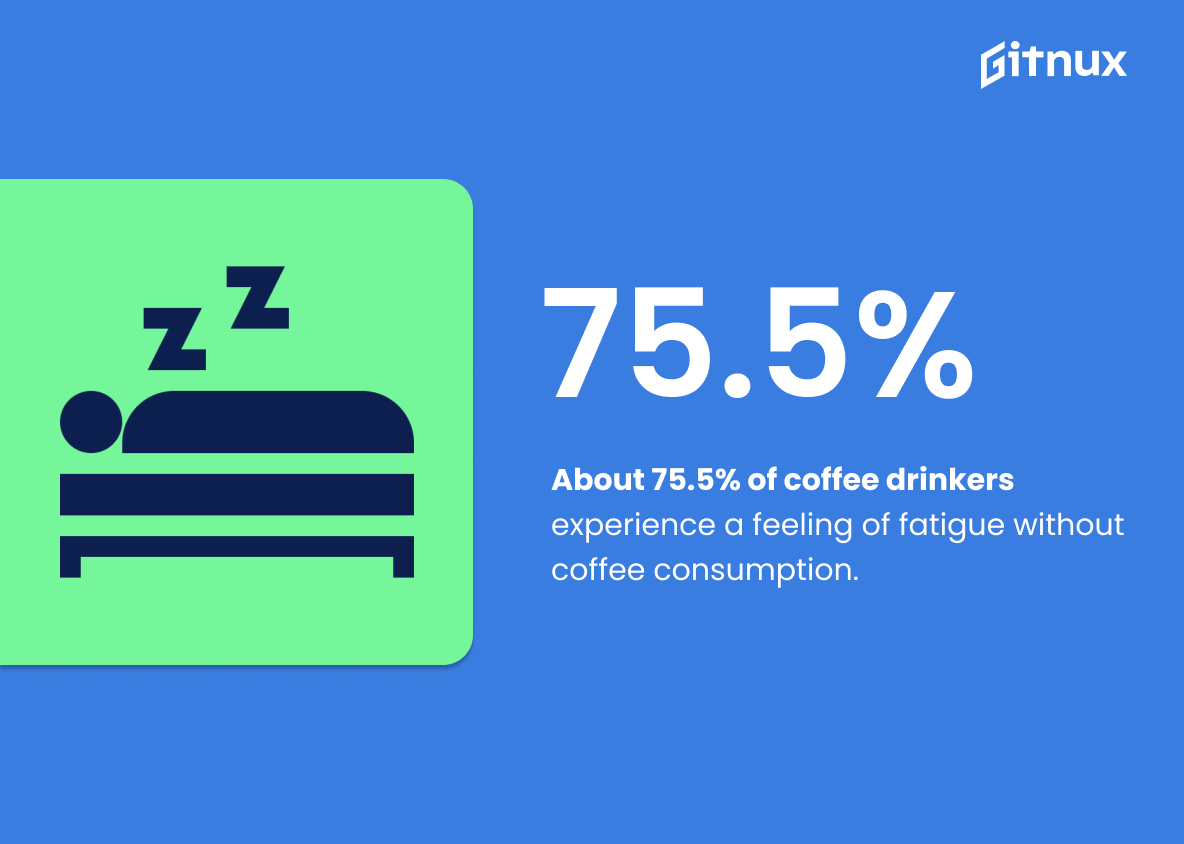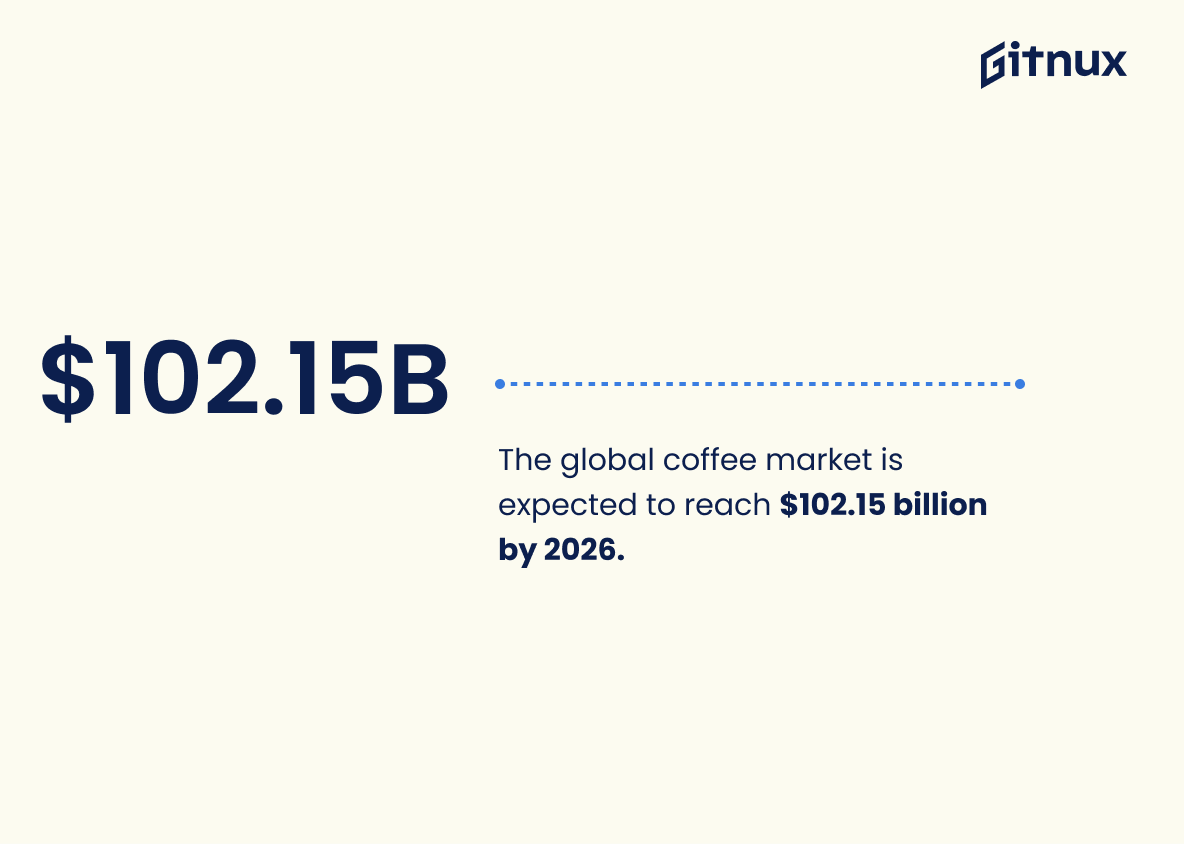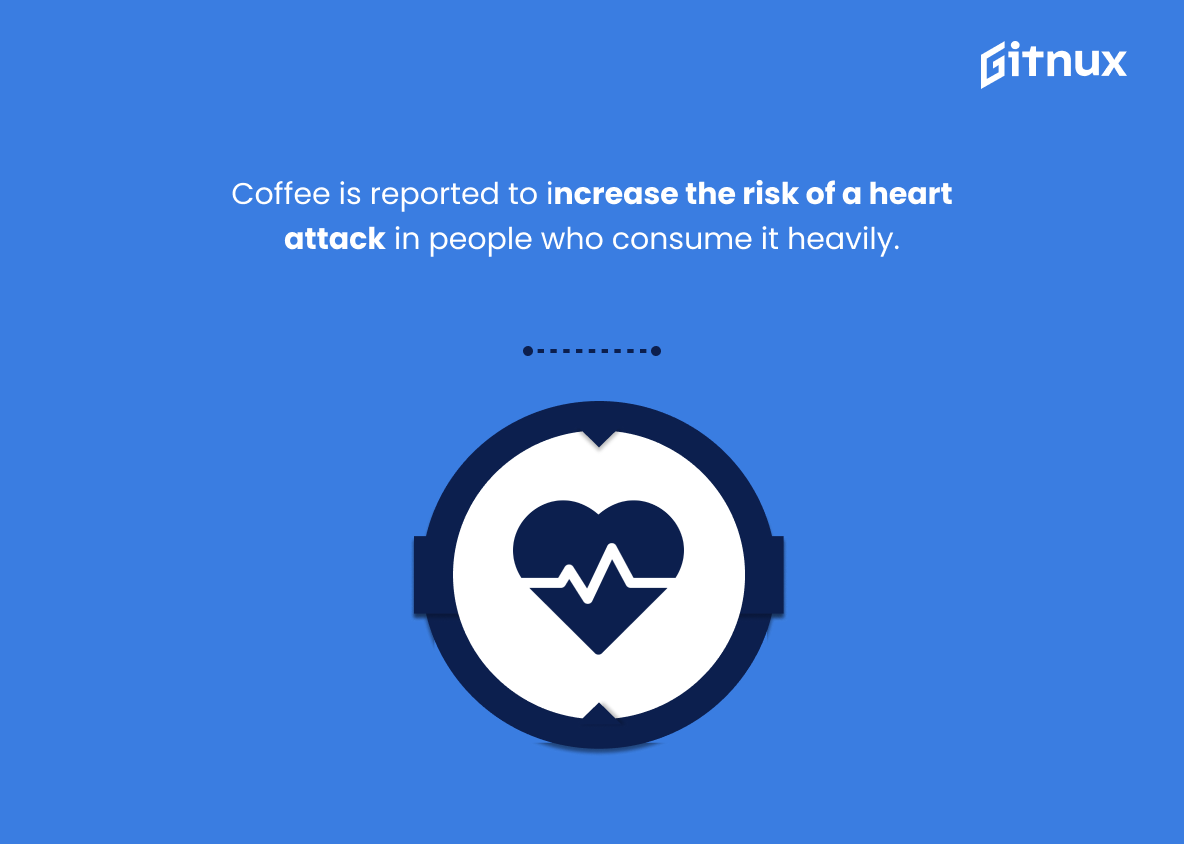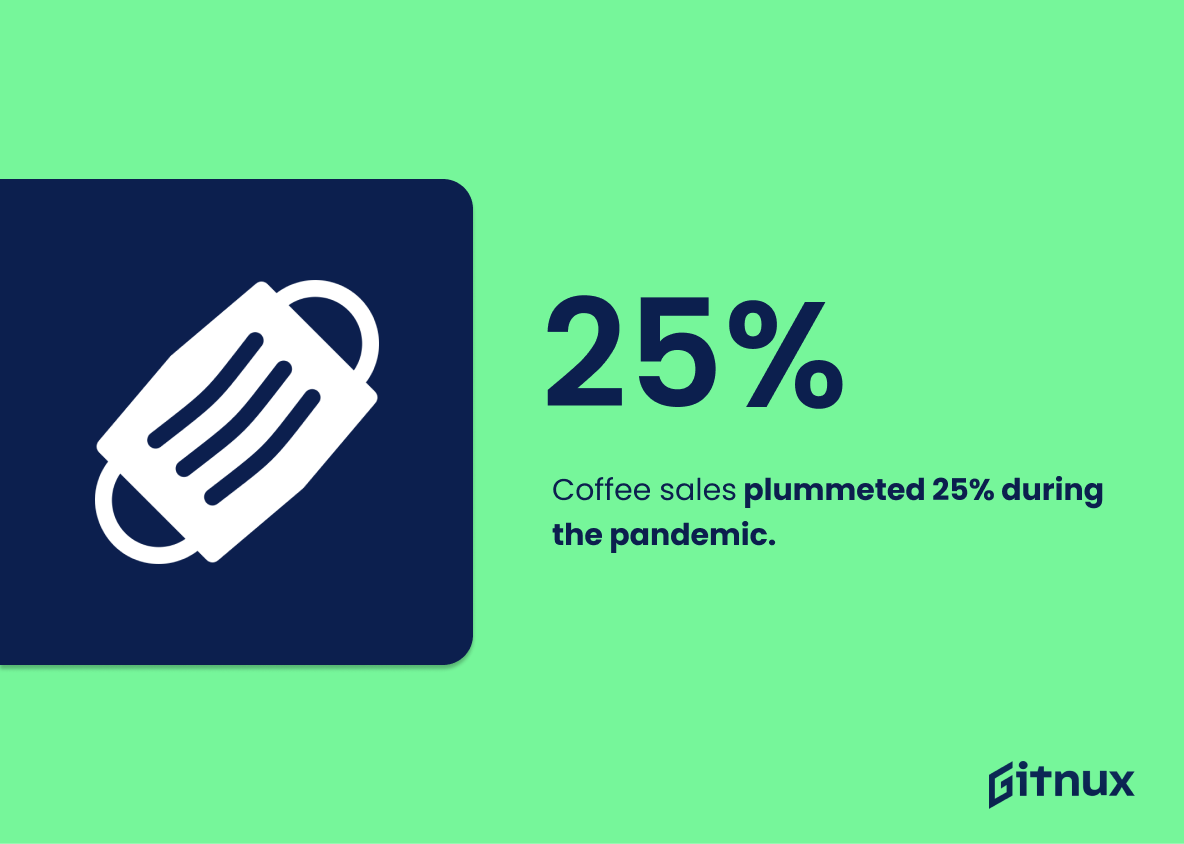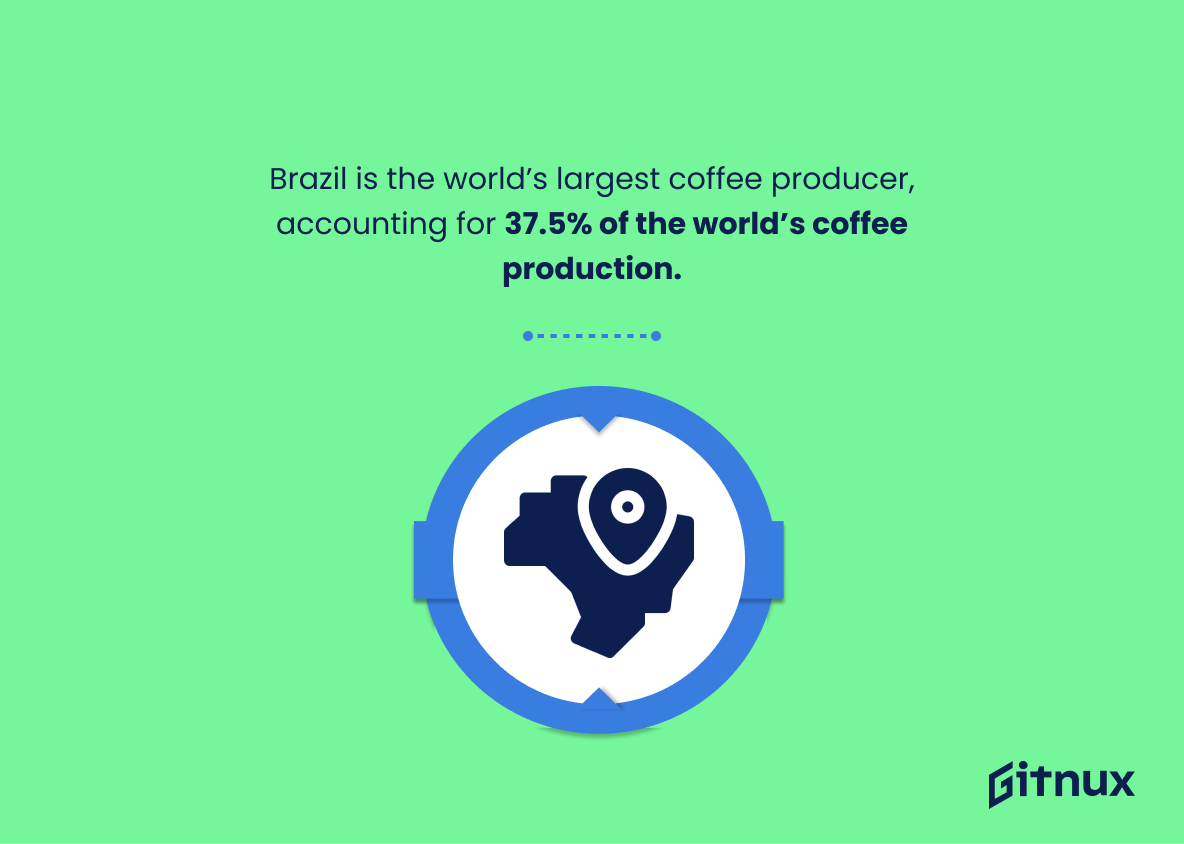Coffee is one of the most popular beverages in the world, and it’s no surprise that Americans are among its biggest fans. According to a 2018 survey by USA Today, 64% of Americans drink coffee daily. This number is expected to grow even further as worldwide consumption increases at an average annual rate of 2.2% between 2020 and 2025 according to Statista.
But what about those who consider themselves addicted? A study conducted by Rehabs found that 31% of coffee drinkers identify as addicts while 50% feel they need coffee just to function normally throughout their day-to-day lives. The same study also revealed that on average, American consumers spend $1,100 annually on this beloved beverage – with 67 percent preferring milk or cream added for extra flavor.
When looking at global trends Finland tops the list when it comes to per capita consumption with 9.77 kg consumed each year according to Statista data from 2020; however Starbucks still reigns supreme when it comes sheer numbers – boasting 32 660 stores around the globe last year alone. And if you thought these figures were impressive then wait until you hear this: The Global Coffee Market Report estimates that by 2026 we will see market valuation reach USD 102 billion dollars.
So why do people love drinking so much java? Well research suggests there may be more than meets the eye here – studies have shown us time and again how extroverted personalities tend towards higher levels of caffeine intake along with increased impulsivity compared non-coffee drinkers (Hopes & Fears). Men too seem particularly drawn towards binging on cups upon cups since they’re 48 % more likely than women (NCBI) but don’t worry ladies because decaf sales account for 10 % US total sales which means everyone can get involved without having any adverse effects like fatigue or heart attack risks associated with heavy use (Daily Burn/ NCBI). Plus did you know 68 % start their days off right thanks some good old fashioned joe?. It doesn’t stop there either – not only does our favorite hot beverage bring joy into our lives but also provides income opportunities for 125 million people across all corners of earth making up primary or secondary sources livelihoods(Daily Coffee News). Lastly let’s not forget about health benefits such as reducing liver cancer risk by half after consuming 3–4 cups a day (NCBI), something Brazil knows well being responsible 37 .5 % production globally(World Atlas).
Coffee Addiction Statistics Overview
31% of coffee drinkers consider themselves addicted.
This statistic is a telling indication of the prevalence of coffee addiction among coffee drinkers. It serves as a reminder that coffee addiction is a real issue that needs to be addressed, and that it affects a significant portion of the population.
50% of Americans feel that they need coffee to function.
This statistic is a telling indication of the prevalence of coffee addiction in the United States. It suggests that half of the population relies on coffee to get through their day, which is a concerning statistic that warrants further exploration.
The average American spends $1,100 on coffee annually.
This statistic serves as a stark reminder of the prevalence of coffee addiction in the United States. It highlights the fact that Americans are spending a significant amount of money on coffee each year, which could be indicative of an unhealthy reliance on the beverage.
In 2020, Finland consumed the most coffee worldwide, with 9.77 kg per capita.
This statistic is a telling indication of the prevalence of coffee consumption in Finland. It speaks to the fact that coffee is a major part of the Finnish lifestyle, and that coffee addiction is a real issue in the country. It is a reminder that coffee addiction is a global problem, and that it is important to be aware of the potential risks associated with excessive coffee consumption.
Approximately 67% of Americans prefer their coffee with milk, cream or sugar added.
This statistic is a telling indication of the prevalence of coffee consumption in the United States. It suggests that the majority of Americans are not only drinking coffee, but are also customizing it to their own tastes. This speaks to the fact that coffee has become an integral part of many people’s daily routines, and that it is a habit that is not likely to be going away anytime soon.
About 75.5% of coffee drinkers experience a feeling of fatigue without coffee consumption.
This statistic is a telling indication of the power of coffee addiction. It shows that the majority of coffee drinkers rely on the beverage to stay awake and alert, and without it, they experience a feeling of fatigue. This statistic is a powerful reminder of the prevalence of coffee addiction and its effects on people’s lives.
In 2020, Starbucks had about 32,660 stores worldwide.
This statistic is a telling indication of the prevalence of coffee addiction worldwide. With over 32,000 stores, Starbucks has become a global phenomenon, and its success is a testament to the fact that coffee consumption is a widespread habit. This statistic serves as a reminder of the magnitude of the coffee addiction problem and the need for further research into its causes and effects.
The global coffee market is expected to reach $102.15 billion by 2026.
This statistic is a testament to the immense popularity of coffee, and its potential to become an even bigger part of our lives. It speaks to the fact that coffee addiction is a growing phenomenon, and that it is likely to become an even more pervasive part of our culture in the years to come.
Men are 48% more likely to binge-drink coffee than women.
This statistic is a telling indication of the gender disparity in coffee addiction. It highlights the fact that men are more likely to engage in the unhealthy habit of binge-drinking coffee than women, which could be a sign of a larger problem. This statistic is an important piece of the puzzle when it comes to understanding the prevalence of coffee addiction and its effects on different genders.
Coffee is reported to increase the risk of a heart attack in people who consume it heavily.
This statistic is a stark reminder of the potential dangers of coffee addiction. It serves as a warning to those who consume coffee heavily that they may be putting their heart health at risk. It is an important piece of information to consider when discussing the prevalence of coffee addiction and its potential consequences.
Coffee sales experienced a significant decrease due to the COVID-19 pandemic, with a drop of around 25% in the 12 months between July 2019 and June 2020.
This statistic is a stark reminder of the impact the COVID-19 pandemic has had on the coffee industry. It highlights the need for coffee addicts to be mindful of their consumption habits and to be aware of the potential economic implications of their addiction. It also serves as a warning to those who are considering taking up coffee drinking as a habit, as it shows that the industry is not immune to the effects of a global pandemic.
Decaf coffee sales account for approximately 10% of coffee sales in the US.
This statistic is significant in the context of Coffee Addiction Statistics because it highlights the prevalence of decaf coffee consumption in the US. It suggests that many coffee drinkers are conscious of their caffeine intake and are actively seeking out decaf options. This could be indicative of a larger trend of people becoming more aware of the potential risks of caffeine addiction and taking steps to reduce their consumption.
It’s estimated that 68% of US coffee consumers start their day with coffee.
This statistic is a telling indication of the prevalence of coffee consumption in the US, and serves as a reminder of the powerful grip coffee has on the daily lives of many Americans. It is a powerful reminder of the potential for coffee addiction to become a problem for a large portion of the population.
About 50% of coffee drinkers who drink three or more cups a day report experiencing withdrawal symptoms when attempting to reduce consumption.
This statistic is a telling indication of the prevalence of coffee addiction. It suggests that half of those who consume three or more cups of coffee a day are so dependent on the beverage that they experience withdrawal symptoms when attempting to reduce their consumption. This statistic is a powerful reminder of the potential for coffee to become an addictive substance.
Brazil is the world’s largest coffee producer, accounting for 37.5% of the world’s coffee production.
This statistic is a crucial piece of information when discussing coffee addiction statistics, as it provides insight into the sheer scale of the global coffee industry. It is clear that Brazil is a major player in the world of coffee production, and this has a direct impact on the prevalence of coffee addiction worldwide.
Drinking 3-4 cups of coffee per day may reduce the risk of liver cancer by 50%.
This statistic is a powerful reminder of the potential health benefits of coffee consumption. It suggests that drinking 3-4 cups of coffee per day could be a simple and effective way to reduce the risk of liver cancer by half. This is an important point to consider when discussing the potential risks and benefits of coffee addiction.
Conclusion
From the statistics presented, it is clear that coffee consumption is a global phenomenon. In 2020 alone, Finland consumed the most coffee per capita and Brazil was responsible for 37.5% of world production. Additionally, 64% of Americans drink coffee daily and 31% consider themselves addicted to it – with 50% feeling they need it to function properly. Furthermore, 67% prefer their coffee with milk or sugar added while 75.5 % experience fatigue without its consumption; on average spending $1,100 annually on this beverage in America alone. The pandemic has caused a decrease in sales but Starbucks still had 32 660 stores worldwide last year and the market as a whole is expected to reach 102 billion by 2026 despite this setback. Coffee drinkers tend to be more extroverted than non-coffee drinkers while men are 48 percent more likely than women to binge-drink it; however drinking 3-4 cups may reduce liver cancer risk by half. Decaf accounts for 10 percent of US sales yet 68 percent start their day with regular java – an industry which provides 125 million people’s primary or secondary income globally too. All these facts point towards one thing: our love affair with caffeine shows no signs of slowing down anytime soon.
References
0. – https://www.globenewswire.com
1. – https://www.rehabs.com
2. – https://www.usatoday.com
3. – https://www.statista.com
4. – https://www.worldatlas.com
5. – https://www.e-importz.com
6. – https://www.forbes.com
7. – https://www.ncausa.org
8. – https://www.ncbi.nlm.nih.gov
9. – https://www.dailyburn.com
